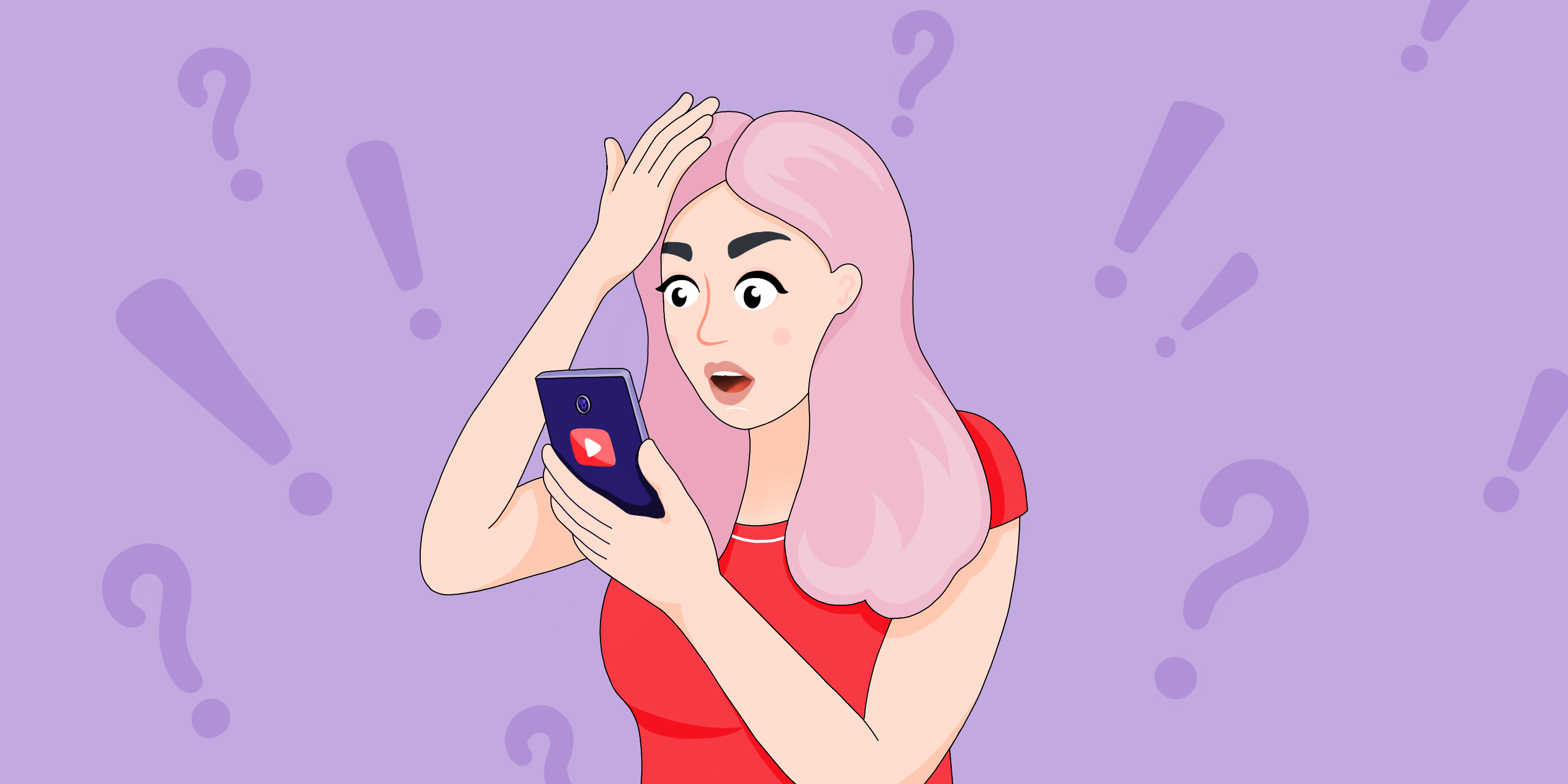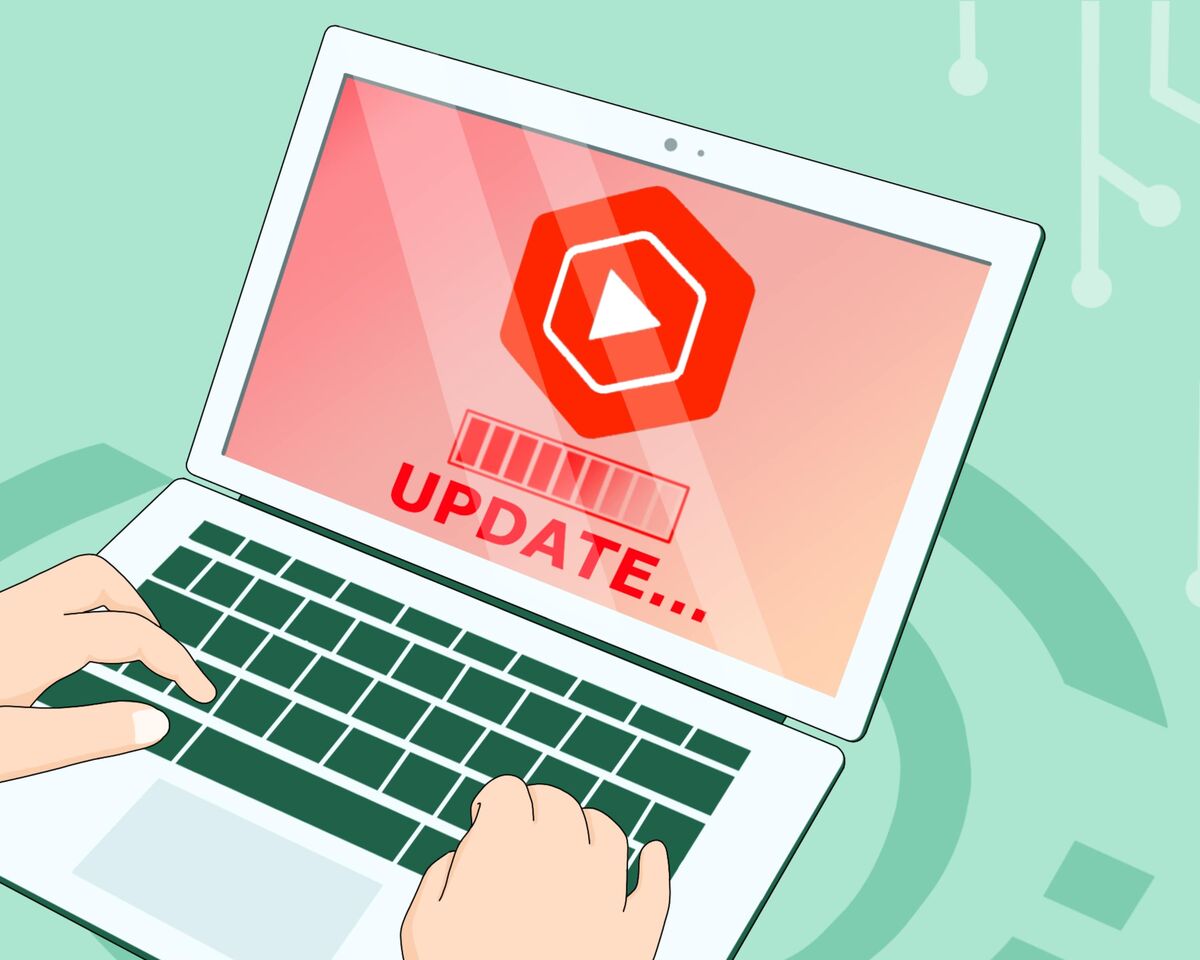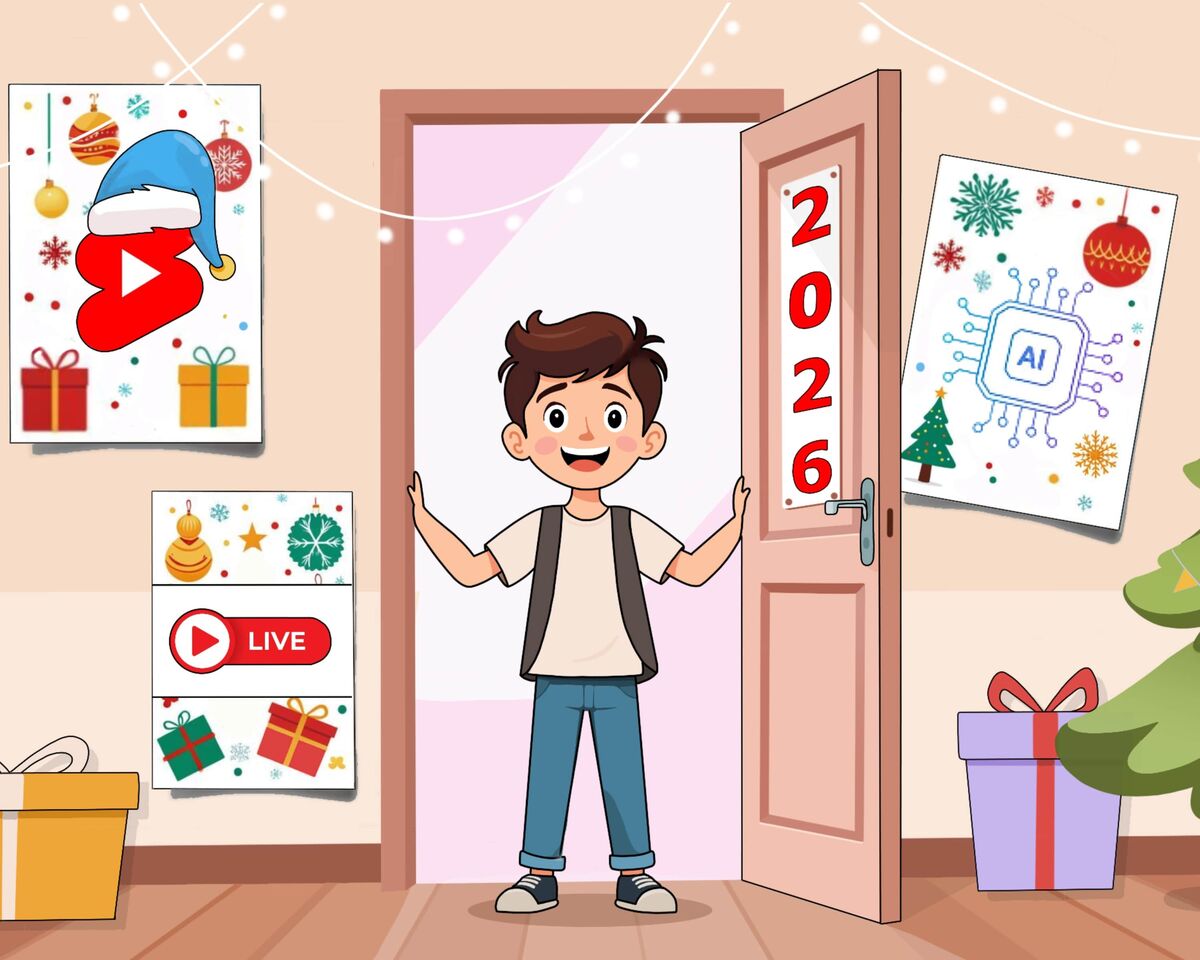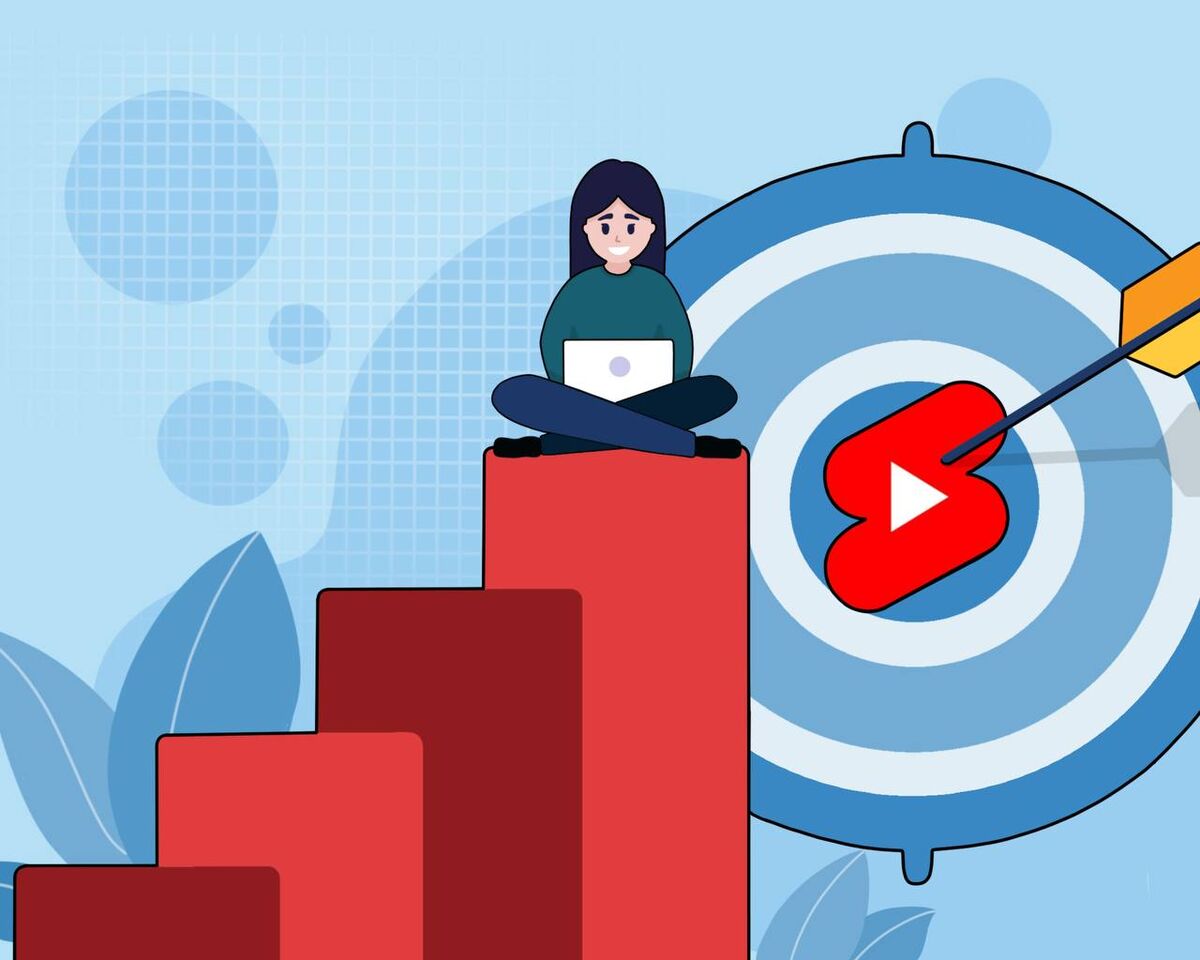The Brutal Truth About Why Your Channel Lacks Views

Sometimes, many of us need a harsh wake-up call to understand which direction to move in, recognize our mistakes, and get a bit motivated. However, this way of seeking new opportunities doesn't suit everyone. Some people are more motivated by support and positive feedback.
But today, we’re addressing those who need a wake-up call that will drive you to take action. Stay with us and listen as we objectively dissect your current approach to running a channel, motivating you to improve.
Scary truth #1: There is no easy route to success
Beginner content creators fall into three categories:
- Those who simply make their channel, upload videos, and over time try to figure out how YouTube works.
- Those who prepare in advance, study everything, and consciously approach content creation.
- Those who don't plan to learn anything, but look for cheats, hacks, and shortcuts to fame and success.
But all of them, regardless of their channel’s development stage, easily fall for promises from various clickbait creators who claim to reveal secret tactics and tricks to conquer YouTube.
The pitch is always the same: buy the course, join our exclusive club, hand over your money, and you’ll receive the hidden secrets to fame, wealth and success on YouTube.
But we will save you some headaches and give you the red pill:
- Hire a professional team
- Make Amazing content
Even these steps don't guarantee success, but they certainly make it easier.
Scary truth #2: YouTube algorithms don't treat everyone equally
Let's explain this so you can truly understand why algorithms are so unfair.
YouTube's algorithms do provide a level playing field for some creators.
That is, if you’re looking at newcomers who have just started actively running channels, then the algorithms will look at their content equally.
New creators have not established themselves with actively watched videos, which means YouTube will show their content to various audiences, assess the response, and then decide whether to provide more impressions or not.
But if we compare, for example, a newcomer and a well established creator, it's obvious that YouTube's attitude towards them will be different.
There will also be a different approach towards a channel with funny videos and a math tutor's channel.
This is done because it's not possible to evaluate channels on different topics equally. The niche coverage, average number of views, and retention rates vary by topic. Therefore, each channel should be assessed within the context of its specific niche.
Moreover, even if YouTube starts giving impressions to a novice creator’s video, it's far from certain that YouTube will hit the target audience on the first try.
Quite often it happens that YouTube evaluates a video, looks at its metadata, and determines that it should be shown to one set of viewers, but they don’t watch the video.
If the aforementioned happens, YouTube doesn’t try again; they simply stop serving impressions altogether.
At the same time, videos on large channels receive an average or above-average number of impressions, because their videos have already proven themselves, their audience is known, nothing needs to be tested.
So it turns out that YouTube will always give preference to large channels that always garner good views and, of course, money.
It's pointless to be sad about this, it's simply ineffective, especially since this kind of favoritism can be fought.
- Upload content regularly to specific audiences
The more often you try, the faster YouTube will find your target viewers. The clearer your videos are presented, the higher quality and more interesting the content inside, the faster your target viewers will turn into regular viewers.
And then you will become an established creator.
- Even if you have a few views, even if it's demotivating - don't stop, each new video is a new chance.
- The more videos you release, the more information YouTube will gain about your content and desired audience.
- Be persistent.
As you are probably starting to understand, there are no easy options. If you want to continue your journey on YouTube, you'll have to maintain patience and perseverance.
- Don't blame YouTube
A victim mentality forces you to give up and look for someone to blame, instead of continuing to work hard on your channel. On YouTube, no one is really at fault, that's just how their system works.
You wouldn't be upset at Taylor Swift for being an already famous performer who has earned a reputation, and is listened to by tens of millions of people, while you've just started your career as a performer.
Scary truth #3: There is no shadowban
You might feel negatively towards YouTube’s algorithm and what it prioritizes. But understand the following - shadow banning on YouTube does not exist.
If you immediately complain about being shadow banned instead of analyzing your content, you will not make progress and will remain stuck at ground zero.
Shadow banning is nonsense and a fiction for the lazy, who don't want to analyze their content, competitors, topics, and think through a channel development strategy.
Just think logically: it's not in YouTube's best interest to shadow ban.
It wants to make money, any creator on the platform can bring in revenue, and before monetization is enabled, YouTube doesn't even have to share revenue. So why would it ban and push you aside?
If it didn't want your content on the platform, it simply wouldn't allow you to upload it. Why allow you to take up extra space on its servers? It's already crowded, there are many people.
If shadow banning exists, how do other creators achieve success?
Yet they grow and develop their channels, gather a loyal audience, and even manage to collect donations from grateful viewers.
Do you think they bribed YouTube, or its CEO Neal Mohan?
Are there actually restrictions on YouTube? Yes, of course.
But you can easily read their rules. Few creators read them, and then they're surprised when they violate one.
YouTube has many rules, with different sections, subsections, points, and sub-points.
Imagine operating in the real world with the same lack of awareness? First you rob a store, and then would you be surprised that they want to put you in jail for it?
So yes, violations of community guidelines certainly have consequences for your channel and content.
In addition, some restrictions relate to age restrictions, when content starts to get fewer views because the audience reach simply becomes smaller.
But here's a surprise, all the conditions for restrictions are, again, spelled out in the rules!
Age-restricted videos will be unavailable for people under 18, as well as for those who haven't specified their age in their account or watch YouTube without logging into an account. And with these restrictions, the content will receive fewer impressions and, consequently, fewer views.
You're free to be offended at YouTube, complain about unfairness, and continue saying that all other creators, who magically don't have a shadow ban and manage to develop on the platform, are just lucky.
Let's assume you were right. How would this thinking help you? That's a rhetorical question.
YouTube doesn't like you, doesn't dislike you, doesn't hate you, it simply doesn't know you.
From YouTube's perspective, only a small number of their largest creators are actively recognized by management. Everyone else simply exists on the platform.
Scary truth #4: People don't care about your content.
Not only is YouTube unfair, but people don't care about us either. Viewers have no motivation or reason to trust new creators. Who would you choose to trust: someone you’ve never heard of or a well-known YouTuber?
Most of the audience chooses what they're already familiar with, because people tend to stay in their comfort zone, and watching videos on the same familiar channels is one way to stay there.
The audience won't care about you until you make them notice you and become interested in your content.
Let's think about what might grab viewers' attention?
- Find out what the audience wants and make it for them
If large creators can already dictate audience interests, as their loyal base is ready to adapt to their content, then newcomers will have to do exactly the opposite.
You'll have to study audience interests, create videos that will help, solve their problems, answer their questions, satisfy their interests.
Only after you've built a base of fans who are interested in literally everything that happens to you, will you be able to somehow manipulate their interests in favor of your own.
- Positioning through "ME" will never work on a new channel
Continuing on the previous topic: viewers don't know who you are, and they are not interested in mundane details of your life.
Day-in-the-life vlogs were relevant about ten years ago when this content format was new. However, today, it is not as successful an approach.
Many beginners in various niches post videos with titles like: “I’m painting with watercolors,” “I’m making toys,” “I’m planting cucumbers.”
Your “I” currently carries no weight in the eyes of new viewers. Even if the videos are good, you need to change your positioning to attract viewers.
Not “I’m painting with watercolors,” but “how to paint with watercolors for beginners,” not “I’m making toys,” but “how to quickly make a toy from available materials,” not “I’m planting cucumbers,” but “ten effective ways to plant cucumbers so that they bear fruit every hour.”
To become interesting to someone, you need the following steps: a topic that interests the audience even if they don't know you → an engaging video that makes viewers want to watch more content on your channel → trust from the audience, turning random viewers into regular ones.
Scary truth No. 5. You overestimate yourself
Beginners often think they are creating incredibly unique content, but in reality, the competition with similar creators is enormous, and small channels are far from being top among other creators.
And this is not because novice creators are arrogant egotists, but simply because most of them do not bother to study their competitors in their niche.
Let's go over the most obvious points that creators prefer to overlook:
- Your thumbnails are not quality
This is a common problem. Video thumbnails are important because nothing will happen without them: no views, no subscriptions, no promotion, no growth whatsoever.
If your thumbnail doesn’t make people want to click on it, and doesn't interest viewers, then you won’t get anywhere.
It doesn’t even matter what your channel looks like overall; that’s secondary. But your videos, separate from your channel, should not have random thumbnails you slapped together thoughtlessly just to have something there.
Yes, it’s difficult. Creating a solid thumbnail is a job for pros, for real designers, and beginner creators often have to juggle tasks alone, doing the work of an entire team.
But when you want to grow and develop by creating a YouTube channel, you must understand that you are your own director, screenwriter, operator, editor, producer, SEO analyst, designer, and many other professions needed for a full-fledged production team.
If you can’t handle a task, you can pay someone who is a professional at it. Nowadays, there are even AI tools to help you. But leaving your videos without proper design is depriving yourself of a chance for promotion.
- You don't know how to encourage people to be active
We can't count how many times creators have complained, and continue to complain, that while their videos are being watched, they see no comments, likes, or subscriptions.
Without audience engagement, videos don’t get many views from YouTube and quickly fizzle out after a small initial spike. In addition, the category of "engagement" includes visible comments, likes, and subscriptions along with factors such as re-watching certain moments, clicks on the "Share" button, clicks on end screens, and so on.
To make viewers want to engage with your videos, you as a creator need to give your audience a reason to do so.
If you simply beg, saying YouTube will promote your videos better, it won’t work because no one likes beggars.
Reminding viewers that they can subscribe or like should not be dumped on a viewer all at once, at the beginning or end of the video, as many love to do. When you dump all kinds of requests at once, there’s a good chance viewers won’t do any of them.
Each request should be justified: you presented a chunk of useful information — remind them that it’s worth a like; you shared something else important and valuable — remind them that all the videos on your channel are valuable and that it’s worth subscribing to.
The narrative of the videos needs to be built in such a way that the audience wants to engage in discussions in the comments. But just saying, “Leave a comment,” won’t work.
Cause-and-effect relationships always work, and there are countless psychological techniques to motivate viewers to engage.
- Stop treating your content like you're already a famous creator.
As mentioned above, what works for popular creators will not work for beginners.
Don’t write titles for your videos as if everyone already knows who you are, as if you have a million-strong audience, and everyone understands everything. This approach may work for big creators but not for newcomers.
You need to take your video out of the context of your channel and place it alongside others on the same topic. Keep in mind that a big creator instantly has a loyal audience, while you do not. Then think about how to title and design your video to outshine even a YouTuber with a million subscribers.
We can be inspired by big creators and take interesting techniques from their videos, but you are not a copycat. Finding your own uniqueness among the creators in your niche is a big task, one that consists of trial and error.
The balance between what you like and what your audience likes is not found in a couple of videos, so don't be sad if it doesn’t work out the first time. Here, as in everything on YouTube, the main thing is to keep trying.
Scary truth No. 6. You're only half-listening
This is the best point! People never tire of complaining that creators repeat each other, say the same things, and drag out the same topics from video to video.
Maybe the reason is that what the experts talk about is exactly what helps? Most of the advice is really useful, but you only half-listen, don’t apply it, and then complain that nothing works.
Creators really want to help you, but you don’t want to help yourself. You made a good thumbnail once, the video didn’t immediately get a million views, so the advice must not work.
Let’s go back to the point that there are no easy paths to success on YouTube unless you have a couple of spare millions in your pocket. To achieve something on this platform, you have to be hardworking and patient, there’s no other way.
Furthermore, you absolutely need to make mistakes and learn from them, otherwise you will never find your own path on YouTube, discover your audience, or understand what really works for you.
No matter how much advice you listen to, it may be useful for most people but might not work for you individually.
Many beginners think, “I made thumbnails the right way, but nothing changed.” In reality, one video might have a decent design, but the whole channel is haphazardly thrown together. Naturally, one video won’t change much; you have to keep trying and learning from your failures.
Scary truth No. 7. Quantity and quality are equally important on YouTube
Without producing a large number of videos, you will never start making quality content. This is a simple axiom, and all creators go through this path.
If you pose the question: quantity or quality, quality always wins on YouTube. Because now the competition is huge, viewers are not as interested in constant publications as they were on YouTube ten years ago when there were far fewer creators and content.
Now the platform is full of channels with big, powerful productions, so of course, viewers are now used to a high level of content.
But this doesn’t mean you have no chance at all.
Today, the uniqueness of the creator, their sincerity, and openness with the viewers play a huge role. It’s no secret that the audience is tired of staged action shots, flashy rich lives, and secrets to success.
Now is a time when we want to see ourselves in the internet stars, to see that we are not the only ones experiencing difficulties and dealing with daily problems.
We want to feel a shoulder next to us, to communicate with like-minded people, to unite against common troubles, rather than listening to endless success stories and incredible secrets of a rich life.
So yes, quality content on YouTube will ultimately win, but you won’t achieve it without experience. The concept of "quality" includes both the technical aspects of shooting and the substance of the content.
So before you start doing things well, allow yourself to make a million mistakes that you can honestly share with your audience.
One Last “Secret” That Creators Constantly Ignore
There is exactly one secret to growing on YouTube—understand what viewers want, identify your audience, establish a connection with them, and build a relationship.
If you expect instant results with minimal effort, it won’t happen. It doesn’t happen in any field: businesses are not built in a day, great scientists don’t win the Nobel Prize in a week, and astronauts go to space after years of preparation.
Lastly, here’s another not-so-scary truth: behind big channels are big investments.
Whether it's in the form of money, time, or effort, the key is to choose what you are willing to invest in on the path to something greater.
No one denies the existence of randomness or luck, but where are all those hype-chasers now? And why do we all still return to our favorite, time-tested creators who achieved everything through their hard work? Because quality content always finds its audience, and all YouTube giants once started small.
You should always strive to create content that brings people together, fostering a long-term connection. This is called genuine success, and once you experience it, you won’t crave quick rises, fleeting hype, or momentary fame. Good luck!




